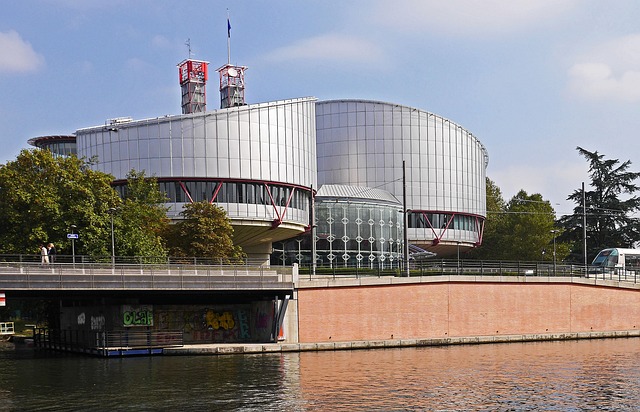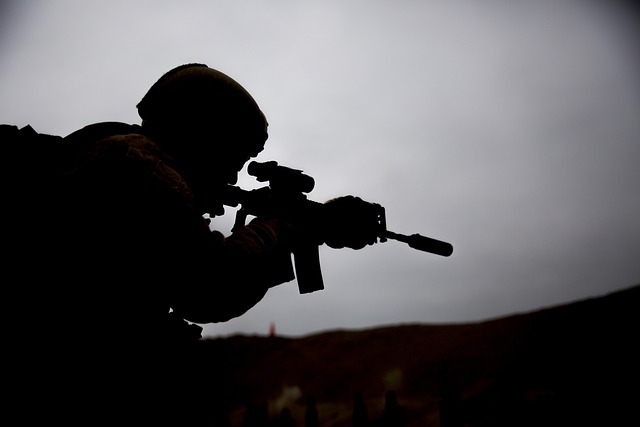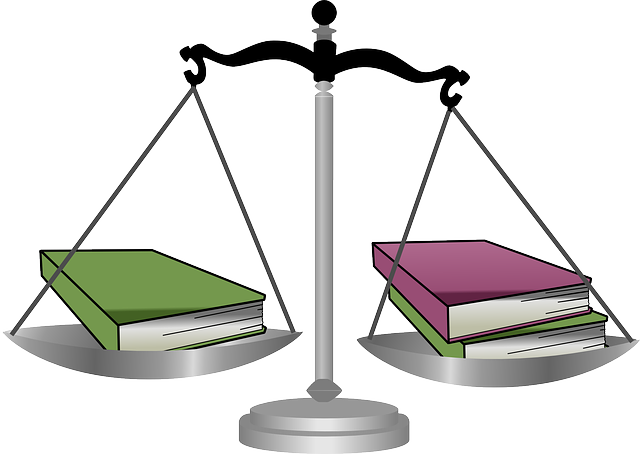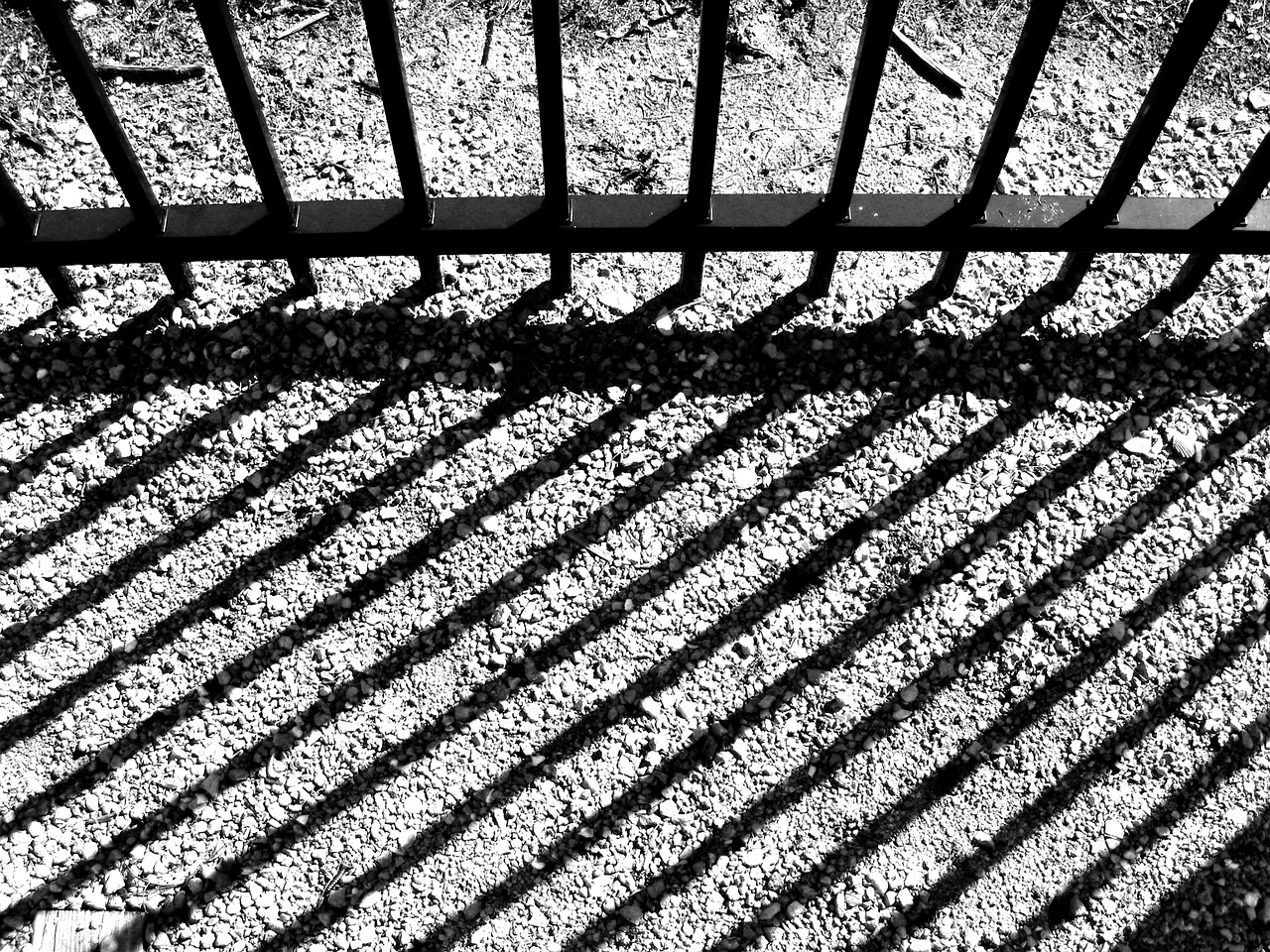3
0
7597
Фабула судового акта: Заявник, громадянин України В.А. Іванко, скаржився на порушення Україною статті 3 Конвенції внаслідок жорстокого поводження з боку працівників міліції та відсутності ефективного розслідування в зв'язку з цим.
Заявник стверджував, що разом з іншими особами був затриманий групою міліціонерів та доставлений у відділок, де до затриманих було застосовано фізичний і психологічний тиск для отримання зізнавальних показань у вчиненні трьох крадіжок. Наступного дня щодо затриманих було порушено кримінальну справу та складено протокол, яким задокументовано інші дату та обставини затримання.
Під час переведення у СІЗО Заявника було оглянуто, наявності тілесних ушкоджень не встановлено. Через два місяці судово-медичний експерт під час огляду зафіксував легке тілесне ушкодження у Заявника. Згодом Заявника та інших затриманих було повторно допитано, після допиту експерти встановили наявність тілесних ушкоджень. Натомість, працівники швидкої допомоги, які оглядали Заявника, зафіксували струс мозку, забій нирки та інші травми, рекомендували госпіталізацію.Заявник стверджував, що після повернення до СІЗО медичний персонал відмовився реєструвати травми.
Заявник неодноразово звертався до прокуратури зі скаргами на жорстоке поводження, оприлюднював відповідну інформацію у ЗМІ, проте кримінальне провадження було припинено за відсутністю події правопорушення. Вироком суду Заявника було засуджено до дев'яти років позбавлення волі, згодом амністовано.
Результати медичних оглядів (в тому числі, зроблені з різницею декілька годин в одному медичному закладі), а також пояснення Заявника були суперечливими, переконливі докази жорстокого поводження – відсутні, з огляду на що ЄСПЛ не зміг встановити порушення матеріального аспекту статті 3 Конвенції.
Разом з цим, ЄСПЛ встановив порушення процесуального аспекту статті 3 Конвенції, оскільки скарги Заявника на жорстоке поводження не були розслідувані належним чином. Зокрема, попри наявність суперечливих медичних висновків, спеціальної судово-медичної експертизи для встановлення часу виникнення, характеру та можливих причин ушкоджень не було призначено і проведено.
ЄСПЛ підкреслив, що медичні огляди осіб, які перебувають під вартою, є важливою гарантією захисту від жорстокого поводження; такі огляди повинні здійснюватись лікарем з відповідною кваліфікацією, без присутності працівників поліції, а складений за результатами огляду звіт має включати не тільки опис травм, а і пояснення пацієнта щодо їхнього походження. ЄСПЛ наголосив, що відмова органів влади вжити заходів для встановлення часу і обставин виникнення і Заявника тілесних ушкоджень була суттєвим недоліком розслідування. Заявнику також не було надано жодних матеріалів розслідування, ефективного розслідування не було здійснено і після публікаціїї у ЗМІ інформації про жорстоке поводження. З огляду на вказане, ЄСПЛ зробив висновок про те, що скарги Заявника на жорстоке поводження не розслідувались належним чином.
Аналізуйте судовий акт: «Буїд проти Бельгії» [ВП] (Bouyid v. Belgium) [GC], заява № 23380/09
«Ель-Масрі проти Колишньої Югославської Республіки Македонія» [ВП] (El-Masri v. the former Yugoslav Republic of Macedonia [GC]), заява № 39630/09
«Каверзін проти України» (Kaverzin v. Ukraine), заява № 23893/03
«Аккоч проти Туреччини» (Akkoç v. Turkey), заяви № 22947/93 та 22948/93
«Хадісов і Цечоєв проти Росії» (Khadisov and Tsechoyev v. Russia), заява № 21519/02

FIFTH SECTION
CASE OF IVANKO v. UKRAINE
(Application no. 46850/13)
JUDGMENT
STRASBOURG
5 March 2020
This judgment is final but it may be subject to editorial revision
In the case of Ivanko v. Ukraine,
The European Court of Human Rights (Fifth Section), sitting as a Committee composed of:
Yonko Grozev, President,
Ganna Yudkivska,
Lado Chanturia, judges,
and Milan Blaško, Deputy Section Registrar,
Having deliberated in private on 11 February 2020,
Delivers the following judgment, which was adopted on that date:
PROCEDURE
1. The case originated in an application (no. 46850/13) against Ukraine lodged with the Court under Article 34 of the Convention for the Protection of Human Rights and Fundamental Freedoms (“the Convention”) by a Ukrainian national, Mr Volodymyr Anatoliyovych Ivanko (“the applicant”), on 12 July 2013.
2. The applicant was represented by Mr G. Thuan Dit Dieudonné and Mr A. Kristenko, lawyers practising in Strasbourg and Kharkiv, respectively. The Ukrainian Government (“the Government”) were represented by their Agent, most recently Mr I. Lishchyna.
3. On 14 February 2019 the Government were given notice of the complaints concerning the applicant’s alleged ill-treatment by the police and the lack of an effective investigation in that respect, and the remainder of the application was declared inadmissible, pursuant to Rule 54 § 3 of the Rules of Court.
THE FACTS
THE CIRCUMSTANCES OF THE CASE
4. The applicant was born in 1984 and lives in Kharkiv.
5. On 4 November 2010 he was sentenced to three years’ imprisonment for hooliganism; at the time of the events recounted below, he had been released on probation from a prison sentence imposed for a separate crime.
6. On 18 December 2010 burglaries were committed in three flats in Kharkiv.
7. According to the applicant, at about 8 p.m. on 18 December 2010 a group of police officers – including officers of the Kharkiv Office for Combating Organised Crime (“the UBOZ”) – arrested him, L. and G. at L.’s flat in Kharkiv and took them to the Moskovskyi district police station (“the police station”), where the police used “physical and psychological pressure” against them until the morning of the next day to make them confess to the above-mentioned thefts.
8. The official version of events, as attested by the documents available to the Court, is that in the early morning of 19 December 2010 K. was stopped and inspected by police on the street. Tools for breaking into buildings via windows were found on him. He was taken to a police station, where he confessed to a number of thefts and submitted that he had had accomplices, including the applicant. Thereafter, the applicant and others were arrested at L.’s flat and taken to the police station, where their arrest was recorded and where they confessed to the thefts. Following a search of L.’s flat and his car, other burglary tools were found, as well as some stolen property.
9. On 19 December 2010 criminal proceedings were instituted against the applicant, L., G. and K. in connection with a number of thefts in Kharkiv on 18 December 2010. Those proceedings were subsequently joined to proceedings concerning a number of other thefts committed in Kharkiv.
10. On the same date, 19 December 2010, an arrest report was drawn up indicating that the applicant had been arrested on that date. He was placed in the Kharkiv temporary detention facility (“the ITT”).
11. On 24 December 2010 the applicant was transferred to Kharkiv pre‑trial detention centre no. 27 (“the SIZO”), pursuant to a court order. According to a certificate issued in February 2011 by the chief of the SIZO’s medical unit, no bodily injuries had been recorded on the applicant upon his admission to the SIZO in December 2010 and no complaints had been lodged by him.
12. The official records furthermore suggest that the applicant remained detained at the SIZO until 2 December 2014, with the exception of the period from 11 April until 30 May 2011, when he was held at Dykanivska prison no. 12 (“the prison”). During his detention at the prison, on 13 and 26 April 2011 the applicant was taken to the ITT; on 1, 19 and 20 April 2011 and on 10 and 13 May 2011 he was taken to the UBOZ premises to participate in various investigative actions.
13. On 3 February 2011 the applicant was examined by a forensic medical expert at the medical unit of the SIZO in order to find out if he was suffering any injury. According to the report issued by the expert on 9 February 2011, the applicant submitted to the expert that he had been ill‑treated by the police on 18 December 2010 and on 23 January 2011 and he provided the account of the ill-treatment set out in paragraph 30 below. No visible bodily injuries – including on his genitals – were recorded by the expert following his examination of the applicant. It was also noted by the expert that the applicant’s medical file suggested that the applicant had borne no bodily injuries when admitted to the SIZO on 24 December 2010.
14. On 11 February 2011 the UBOZ took over the investigation of the criminal case against the applicant and his alleged accomplices.
15. On 1 April 2011 the applicant was examined by a forensic medical expert at the UBOZ premises in the presence of a police officer. An abrasion on his left cheek bone measuring 2 cm by 1.5 cm was noted by the expert. He concluded that the injury had likely been inflicted with a hard blunt object or objects no more than twenty-four hours prior to the examination. The expert categorised the abrasion as a light bodily injury. The expert noted that during the examination the applicant had not raised any complaints and had informed the expert that he had not been ill-treated by the police and had not resisted them in any way, nor had he suffered any accidents or participated in any fights within the previous two or three weeks.
16. According to the applicant, during the morning of 13 April 2011 he and other suspects in the case were taken to the UBOZ for questioning. They were kept in the basement of the UBOZ premises and tortured by the same police officers as those who had participated in their arrest, with the aim of extracting from them confessions to certain crimes, which they had not in fact committed. In particular, the officers beat him and administered electric shocks to the applicant’s ears and genitals, suffocated him using a gas mask, and poured medical alcohol into his throat until he lost consciousness. The applicant also submitted that each time he had been taken to the UBOZ premises he had been subjected to “physical and psychological ill-treatment”. The police officers had also demanded money from him in return for their not charging him with murder.
17. At about 1 p.m. on 13 April 2011 the applicant was examined by a forensic medical expert in the presence of the UBOZ police officer. The expert noted that the applicant had an abrasion on his left earlobe measuring 1 cm by 0.5 cm which had likely been inflicted with one or more hard blunt objects seven to ten days prior to the examination. The expert categorised the abrasion as a light bodily injury. According to the expert, the applicant submitted that the abrasion had been self-inflicted injury approximately a week before the examination. The applicant also informed the expert that was in transit to the UBOZ premises.
18. In the evening of 13 April 2011 the applicant was taken to the ITT. Abrasions on his left ear and an inflammation in the area of his left clavicle area were recorded upon his arrival. At about 10 p.m., at the applicant’s request, an ambulance was called for him. A copy of the ambulance record has been made available to the Court, but it is of very poor quality and barely legible. The only legible part of the list of the injuries made by the ambulance team suggests that the applicant had bruises and an inflammation in the area of his left clavicle. The ambulance staff also noted that the applicant had complained that his injuries had resulted from his ill-treatment by the police. The relevant entry in the ITT logbook relating to ambulance calls notes that the applicant was also diagnosed by the ambulance team with concussion, contusion of the left kidney and blunt trauma to the abdomen. The applicant’s urgent hospitalisation was recommended and he was taken to Kharkiv Emergency Hospital (“the hospital”).
19. According to the domestic authorities, at about 0.40 a.m. on 14 April 2011 the applicant was taken back to the ITT. He presented to the ITT authorities a certificate from the hospital (a copy of which has been made available to the Court) which indicated that no abnormalities had been uncovered by his examination at the hospital by a general practitioner and a neurologist, and that no health complaints had been made by the applicant to those specialists. The parties also submitted that a traumatologist had also examined the applicant at the hospital and had found an improperly healed fracture of the left clavicle.
20. Also at 0.40 on 14 April 2011 the following entry was made in the “complaints” section of the ITT logbook relating to medical examinations: “contusion of the left clavicle (fracture?), skin burns to earlobes, blunt abdominal trauma on the left, head injury?”.
21. According to the Government, upon his return from the hospital, the applicant stated to the ITT administration in writing that he had invented his health complaint and that he had not in fact been subjected to any ill‑treatment by the police.
22. According to the applicant, once he had returned from the ITT to the SIZO, the medical staff of the facility refused to record his injuries, asserting, in particular, that the trauma to his ears and genitals had been self‑inflicted by means of squashing pimples on those parts of his body.
23. According to the applicant, during his detention at the prison (which according to him started on 19 April 2011 and not on 11 April 2011, as suggested by the Government – see paragraph 12 above), he was also subjected to ill-treatment by the police on a number of occasions. In particular, police officers put a restraint jacket and handcuffs on him and hung him over a metal bar.
24. On 29 April 2011 the applicant and his alleged accomplices were charged with seventeen counts of theft; on 19 May 2011 they were committed for trial at the Moskovskyi District Court of Kharkiv (“the District Court”).
25. On 17 June 2011, the applicant was examined by the SIZO’s general practitioner. No abnormalities were recorded. An X-ray examination conducted on the same day found healed fractures of the left clavicle and of a bone in the right wrist.
26. On 10 January 2013 the applicant was again diagnosed with a healed fracture of the wrist.
27. On 15 July 2013 the District Court found the applicant guilty as charged and sentenced him to nine years’ imprisonment. It dismissed as unsubstantiated the applicant’s and his-co-defendants’ complaints of ill‑treatment, referring to the results of the prosecutor’s investigation into the matter (see paragraphs 37 to 45 below). It furthermore noted that the applicant’s medical file suggested that no visible bodily injuries had been found on the applicant either on 24 December 2010, when he had been admitted to the SIZO, or during his medical examination by a forensic expert on 3 February 2011 (see paragraph 13 above).
28. On 2 December 2014, following the application of an amnesty act, the Court of Appeal exempted the applicant from serving his sentence and released him in the courtroom.
29. On 23 and 30 January 2011 the applicant lodged complaints with the prosecutor’s office, alleging that he had been ill-treated by the officers of the Moskovskiy district police station on 18 December 2010. On 31 January 2011 K.’s lawyer and relatives of L. also lodged complaints alleging ill‑treatment of L., K., G. and the applicant in police custody following their arrest.
30. In order to verify the above-mentioned allegations, a prosecutor interviewed the police officers and the applicant. The officers denied any ill‑treatment, giving the version of events set out in paragraph 8 above. The applicant, in his turn, submitted that several police officers had forced him to the floor, tied his feet with adhesive tape and suffocated him with a plastic bag. They had furthermore administered electric shocks to his ears and genitals and had threatened to “help” his aged mother to commit suicide.
31. On 7 February 2011 an assistant prosecutor at the Moskovskyi district prosecutor’s office (“the district prosecutor’s office”) declined to institute criminal proceedings against the police officers, finding no constituent elements of a crime in their actions.
32. On an unspecified date the applicant and his co-defendants complained to the trial court that they had been ill-treated by officers of the Moskovskyi district police station and the UBOZ officers and by an investigator from the regional police office.
33. On 8 November 2011 the trial court instructed the Kharkiv regional prosecutor’s office (“the regional prosecutor’s office”) to verify the above‑mentioned allegations that unlawful methods of investigation had been employed with respect to the applicant and his co-defendants. The copy of the relevant court decision in the Court’s possession appears to be incomplete, with the part containing the court’s reasoning apparently missing.
34. On 13 July 2012 the district prosecutor’s office found that the decision of 7 February 2011 had been lawful and substantiated. It noted, inter alia, that (a) the police station’s visitors logbook stated that the applicant and his co-defendants had entered the police station at 3.40 a.m. on 19 December 2010 and had left it on the same date, and (b) according to information from the ITT and SIZO administrations, no bodily injuries had been recorded on the applicant upon his admission to those facilities on 19 and 24 December 2010, respectively, and no complaints had been raised by the applicant.
35. On 7 December 2012 the trial court again directed the regional prosecutor’s office to investigate the complaint of ill-treatment raised by the applicant and his co-defendant; in its turn, the regional prosecutor’s office ordered the district prosecutor’s office to conduct the investigation.
36. In the meantime, on 8 January 2013, the applicant again lodged a complaint with the district prosecutor’s office regarding his ill-treatment by the police during the pre-trial investigation.
37. On 9 January 2013 the district prosecutor’s office launched an investigation into possible abuse of power on the part of the police officers; at the same time it declined to grant the applicant and his co-defendants victim status as there had been no objective evidence that their rights had been infringed in any way. As far as the applicant was concerned, the regional prosecutor’s office relied, in particular, on: a copy of a police station register containing a written statement by the applicant dated 19 December 2010 that he had no complaints against the police; ITT logbook entries relating to ambulance calls; the record of the search of the applicant upon his admission to the ITT, which suggested that the applicant had had no injuries at that time; a certificate from the SIZO attesting that no injuries had been recorded on the applicant upon his return to the SIZO from the prison; and information regarding the investigative measures conducted with the applicant’s participation.
38. On 18 January 2013, mainly relying on the fact that the police officers had denied ill-treating the applicant, the district prosecutor’s office issued a decision terminating the proceedings for lack of constituent elements of crime in their actions. It asserted that the applicant’s allegations had been a part of his defence strategy, which had aimed at avoiding criminal punishment. The applicant appealed against that decision.
39. On 6 February 2013 a senior prosecutor of the district prosecutor’s office quashed the decision of 18 January 2013 as premature and ordered further investigation. The investigating prosecutor was instructed, in particular, to question the applicant and his co-accused in detail about the circumstances of the alleged ill-treatment.
40. On 15 February 2013 the applicant was questioned by the investigating prosecutor. He maintained his allegations and emphasised that a number of injuries had been recorded by the ITT staff and the ambulance team following his alleged torture at the UBOZ premises on 13 April 2011.
41. On 18 February 2013 the district prosecutor’s office closed the investigation, deeming that there had been no constituent elements of a crime in the actions of the police officers performed within the Moskovskyi district of Kharkiv. By the same decision, in accordance with the rules on territorial jurisdiction, the case material concerning the alleged ill-treatment at the UBOZ premises was sent to the Kyivskyi district prosecutor’s office for investigation.
42. On 7 March 2013 the Kyivskyi district prosecutor’s office launched a criminal investigation aimed at verifying the applicant’s allegation that he had been ill-treated at the UBOZ premises. On 29 April 2013 those proceedings were terminated, according to the Government, for lack of constituent elements of a crime in the actions of the UBOZ officers. No further details regarding that investigation and no copy of the relevant decision of the Kyivskyi district prosecutor’s office have been made available to the Court.
43. Following an appeal lodged by K., on 1 June 2013 the investigative judge of the District Court quashed the decision of the district prosecutor’s office dated 18 February 2013 and ordered that a number of investigative actions be conducted by the district prosecutor’s office in order to verify K.’s allegations.
44. During the additional investigation, the UBOZ officers refused to take part in face-to-face confrontations with the applicant and K. as they considered that the latter parties’ statements had been false and aimed at protracting the criminal proceedings. The applicant’s co-defendant, G., refused to take part in the investigative actions and submitted that he had no complaints against the police officers.
45. On 8 July 2013, citing mainly the testimony of the police officers, the district prosecutor’s office terminated the investigation, stating that no constituent elements of a crime had been found in the course of the additional investigation into the police officers’ actions performed within the Moskovskyi district of Kharkiv.
46. On 30 July 2013 the investigative judge of the District Court rejected an appeal lodged by the applicant against the decision of 8 July 2013, ruling that all necessary measures had been taken and that no evidence in support of the applicant’s allegations of ill-treatment had been found. It can be seen from the case file that the applicant appealed against that decision. The Court has not been informed of the outcome of any such proceedings.
47. On 29 January 2013 a website published a private letter written by the applicant and addressed to an MP in which he complained, inter alia, of his physical and psychological ill-treatment by police – including at the UBOZ premises.
48. On 1 February 2013 a criminal investigation was launched following the above publication in order to verify the applicant’s allegations.
49. On 7 February 2013 the regional prosecutor’s office terminated the proceedings because of the lack of the event of a crime.
50. On 25 April and 30 May 2013 the Chervonozavodskyi District Court of Kharkiv and the Kharkiv Regional Court of Appeal, respectively, upheld the decision of the regional prosecutor’s office dated 7 February 2013.
51. On an unspecified date K. again complained to the regional prosecutor’s office that he, L., G. and the applicant had been ill-treated by the UBOZ officers in an attempt to extract confessions from them.
52. On 6 February 2013 a criminal investigation was commenced into K.’s allegations; on 13 February 2013 it was terminated because the investigators deemed that no crime had been committed. The regional prosecutor’s office mainly relied on the fact that K.’s allegations had already been verified on a number of occasions by the prosecutors and had been declared unsubstantiated.
THE LAW
53. The applicant complained that he had been subjected to torture (i) by police officers at the police station on 18 December 2010, (ii) at the UBOZ premises each time he had been taken there, and (iii) at the prison. He furthermore complained that the authorities had failed to effectively investigate the matter. The applicant relied on Article 3 of the Convention, which reads as follows:
“No one shall be subjected to torture or to inhuman or degrading treatment or punishment.”
54. The Government argued that the applicant had failed to provide evidence of his alleged ill-treatment. In doing so, they submitted that it appeared impossible for them to provide to the Court the part of the applicant’s medical file containing records of the applicant’s injuries prior to June 2011 (that is to say until the applicant was returned from the prison to the SIZO), as the medical file had not been returned to the SIZO from the prison following the applicant’s transfer. A new medical file was therefore opened by the SIZO staff beginning as at the date of the applicant’s return. The Government pointed out that no evidence of the alleged ill-treatment had been found by the district and regional prosecutor’s offices during the above-mentioned investigations into the applicant’s complaints. The investigations had been thorough and their conclusions had been eventually supported by the domestic courts.
55. The applicant submitted, inter alia, that his allegations of ill‑treatment had been confirmed by the medical examinations on 13 April 2011 and his X-ray examinations and that the Government had neither provided a satisfactory explanation as to the origins of his injuries nor carried out an effective investigation into his allegations, despite his repeated and consistent complaints in that respect. He emphasised that his torture at the UBOZ premises had been the most essential element of his complaint and that his allegations in this respect had remained unanswered. The applicant also contested the accuracy and reliability of the reports produced by the forensic expert who had examined him on 1 and 13 April 2011, arguing that not all his injuries had been recorded, as the examinations had taken place at the request of the UBOZ and in the presence of the UBOZ officers who had been involved in his ill-treatment.
56. The Court notes that the applicant’s complaint to the Court of his ill‑treatment on 18 December 2010 at the police station (unlike his allegations before the domestic authorities in that respect), was limited to a brief statement that he “had been subjected to psychological and physical coercion”, with no details being given (see paragraph 7 above).
57. The Court furthermore notes that the applicant provided no medical evidence in support of his allegations of his being ill-treated on that date. According to the applicant’s complaint to the domestic authorities, that ill‑treatment included subjecting his ears and genitals to electric shocks, suffocating him with a plastic bag, and binding his legs with adhesive tape (see paragraph 30 above). Moreover, the applicant did not contest the Government’s submissions that no visible injuries had been observed on him upon his admission to the ITT and the SIZO on 19 and 24 December 2011 respectively (that is to say shortly after the alleged events) and provided no evidence to the contrary. Even assuming that the applicant did suggest that the healed fracture of his left clavicle recorded during his medical examinations on 13 April and 17 June 2011 attested to the fact that that clavicle had been broken by the police on 18 December 2010, no medical opinion regarding the possible date on which the injury was sustained has been provided by the applicant to the Court (even since his release) to illustrate the link between the diagnosis and the alleged ill‑treatment.
58. Nor is there any evidence supporting the applicant’s complaint (which is set out in rather general terms) of ill-treatment at the prison. In addition, it should be noted that the applicant did not demonstrate that he had raised that complaint in a meaningful way before the domestic authorities.
59. Thus, the Court considers that the above-mentioned complaints lodged by the applicant are not “arguable” for the purposes of Article 3 of the Convention and that the domestic authorities were not required to carry out an effective investigation into the alleged events. Accordingly, the Court finds that this part of the applicant’s complaints of ill-treatment, under both the substantive and the procedural limbs of Article 3, should be rejected as manifestly ill-founded, pursuant to Article 35 §§ 3 (a) and 4 of the Convention.
60. By contrast, the Court notes that the applicant’s allegations of his ill‑treatment at the UBOZ premises – at least on 13 April 2011 – are supported by medical evidence (see paragraph 18 above). Accordingly, that complaint was prima facie arguable, and the authorities were therefore required to conduct an effective official investigation (see, for instance, Kaverzin v. Ukraine, no. 23893/03, § 106, 15 May 2012).
61. In the light of the foregoing, the Court finds that the applicant’s complaint under Article 3 of the Convention of having been ill-treated at the UBOZ premises and the authorities’ failure to conduct an effective investigation in that regard is not manifestly ill-founded within the meaning of Article 35 § 3 (a) of the Convention. The Court furthermore notes that it is not inadmissible on any other grounds. It must therefore be declared admissible.
62. The relevant general principles of the Court’s case-law are summarised in Bouyid v. Belgium ([GC], no. 23380/09, §§ 81-90 and 100‑01 ECHR 2015), and El-Masri v. the former Yugoslav Republic of Macedonia ([GC], no. 39630/09, §§ 182-85, ECHR 2012).
(a) The State’s obligation to conduct an effective investigation
63. The applicant maintained before the domestic authorities and the Court that he had been tortured at the UBOZ premises on 13 April 2011; he provided a detailed description of the alleged ill-treatment and relied on the results of his medical examinations on that date at the ITT and at the hospital.
64. The Court observes that during his medical examination by the ambulance team – that is to say shortly after the alleged ill-treatment – the applicant complained that he had been ill-treated by the police. He maintained his allegations during the trial in his criminal case and also in the course of the investigation into his complaint regarding his alleged ill‑treatment on 18 December 2010 (see paragraphs 18, 32 and 40 above).
65. The Court thus finds that there was an arguable claim that the applicant was ill-treated and it will examine whether a thorough investigation was carried out.
66. The Court observes, in particular, that the result of the applicant’s medical examination at the hospital shortly after the alleged ill-treatment contradicted what had been noted by the ambulance team some two hours earlier. The entry in the ITT register of 14 April 2014 was also confusing (see paragraph 20 above). There is no evidence before the Court (and it has not been suggested by the Government) that any measure, such as a forensic medical examination, was ever undertaken with a view to clarifying the above-mentioned matters and establishing what injuries (if any) the applicant was suffering from on 13 April 2011, and what was their the exact nature, date and possible cause. It reiterates in this respect that proper medical examinations constitute an essential safeguard against the ill‑treatment of persons in custody. Such examinations must be carried out by a properly qualified doctor (without any police officer being present), and the report of the examination must include not only the details of any injuries found, but the explanations given by the patient as to how they occurred and the opinion of the doctor as to whether the injuries are consistent with those explanations (see Akkoç v. Turkey, nos. 22947/93 and 22948/93, § 118, ECHR 2000‑X).
67. In the Court’s opinion, the authorities’ failure to take the relevant steps, for which no explanation has been provided to the Court, amounts to a deficiency sufficient in itself to render the investigation inefficient (see, mutatis mutandis, Khadisov and Tsechoyev v. Russia, no. 21519/02, § 118, 5 February 2009).
68. In fact, it is not clear at all from the available documents what the prosecutor’s response to the applicant’s allegations of his having been ill‑treated at the UBOZ premises was – including the steps that were taken in that respect. The Government referred to the investigation conducted by the Kyivskyi district prosecutor’s office (see paragraph 42 above). However, they provided no documents whatsoever relating to that investigation – not even a copy of the decision of the Kyivskyi district prosecutor’s office dated 29 April 2013 by which the applicant’s complaint was found to be unsubstantiated.
69. Moreover, it is apparent from the parties’ submissions that the decision by the district prosecutor’s office dated 18 February 2013, by which the relevant material was sent for investigation to the Kyivskyi district prosecutor’s office, was eventually quashed by the District Court on 1 June 2013, which ordered an additional investigation (see paragraph 43 above). The wording of the most recent decision of the district prosecutor’s office (dated 8 July 2013) – which was upheld by the domestic court – suggests, however, that it does not concern the actions of police officers at the UBOZ premises but only the actions of police officers within the Moskovskyi district of Kharkiv (see paragraph 45 above).
70. Likewise, when dismissing the applicant’s ill-treatment complaint in its judgment of 15 July 2013, the District Court did not assess any medical data relating to the period after 9 February 2011, thus leaving unanswered the applicant’s arguments concerning his ill-treatment at the UBOZ premises on 13 April 2011 and on later dates (see paragraph 27 above).
71. Lastly, no evidence has been provided by the Government to the Court showing that any meaningful effort to investigate the applicant’s allegations that he had been ill-treated at the UBOZ premises was made during the investigation launched by the regional prosecutor’s office following the publication of the applicant’s complaint in the media and K. lodging his complaint (see paragraphs 48 to 50, and 52 above).
72. In the light of the foregoing considerations, the Court finds no evidence before it indicating that the authorities investigated the applicant’s allegations of his ill-treatment at the UBOZ premises diligently and thoroughly, as required by the Convention. There has therefore been a procedural violation of Article 3 of the Convention in this regard.
(b) The applicant’s alleged ill-treatment
73. The Court observes that the applicant complained that he had been ill-treated each time that he had been taken to the UBOZ premises. However, he provided an account only in respect of his alleged ill-treatment on 13 April 2011. His version of events did not contradict the account he had provided to the domestic authorities. He relied on the results of his medical examinations by the ITT staff and the ambulance team, the conclusions of the traumatologist, and the results of his X-ray examinations (see paragraphs 18, 19, 25 and 26 above).
74. The Court notes the Government’s argument that it appeared impossible for them to provide medical data – including data relating to any possible injuries sustained by the applicant – for the period from 11 April until mid-May 2011 (see paragraph 54 above). However, it has not been suggested by them that the documents were lost or destroyed but rather that they remained in the prison and were not returned to the SIZO (see paragraph 54 above). The Court is therefore not convinced that it was indeed impossible for the Government to obtain the necessary documents and send them to the Court. Having those documents would have been important for the verification by the Court of the accuracy of the applicant’s allegations.
75. On the other hand, the Court is not aware either of any obstacle to the applicant obtaining those pieces of evidence from the authorities.
76. The available evidential material concerning the applicant’s alleged ill-treatment is controversial. It is true that abrasions on the applicant’s left earlobe and the inflammation in the left clavicle area were noted upon the applicant’s arrival at the ITT on 13 April 2011. However, it appears that the ear injury was also recorded by the forensic medical expert earlier on that date (prior to the applicant’s arrival at the ITT). It follows from the expert’s report that the injury was sustained between seven and ten days before the examination and, as suggested by the applicant to the expert, was self-inflicted (see paragraph 17 above). While the applicant alleged that the expert had failed to record all his injuries, it does not appear from his submissions that he disputed the expert’s conclusions as to the injury the latter had recorded.
77. As regards the clavicle, the conclusion of the traumatologist which the applicant referred to in support of his allegations of ill-treatment was that the applicant had been suffering from an “improperly healed fracture of the left clavicle” which, in turn, suggested that the fracture had not been sustained on the day of the examination. The X-ray examinations in June 2011 and in 2013 indeed confirmed the above diagnosis and also revealed a healed fracture of a bone in the applicant’s right wrist. However, yet again, the exact date of the injuries remains unknown and no medical opinion has been provided to the Court showing a link between the healed injuries and the alleged ill-treatment by the police.
78. Furthermore, as the Court has already noted (see paragraph 66 above) conflicting documents were issued by the same civil medical institution, within about two hours of each other: the first document (the ambulance record) suggested that the applicant had a number of injuries, and the second one (the certificate from the hospital) stated that no abnormalities had been uncovered during the ensuing medical examination of the applicant at the hospital and that no complaints had been made by him. It can be seen from the Government’s submissions that the domestic authorities treated the ambulance record as a preliminary diagnosis that did not appear to have been confirmed at the hospital. The applicant, apart from relying on the diagnosis of the traumatologist to support his allegations of a fracture of the clavicle, remained silent as to the circumstances of his examination at the hospital and the conclusions reached thereby.
79. In view of the foregoing, the Court finds that the available evidence of the applicant’s alleged injuries is not conclusive. There is also no clarity as regards the dates on which the applicant was present at the UBOZ premises. On the one hand, according to the official records, the applicant was not taken to the UBOZ premises on 13 April 2013 at all (see paragraph 12 above). On the other hand, during his examination by the forensic expert on 13 April 2011 the applicant submitted to the latter that he was in transit to the UBOZ premises in order to participate in certain investigative actions (see paragraph 17 above).
80. All things considered, the Court finds that it lacks sufficient evidence to enable it to uphold beyond reasonable doubt the applicant’s allegations regarding the place, time and methods of his ill-treatment.
81. Accordingly, the Court is unable to find a violation of Article 3 of the Convention in its substantive aspect.
82. Article 41 of the Convention provides:
“If the Court finds that there has been a violation of the Convention or the Protocols thereto, and if the internal law of the High Contracting Party concerned allows only partial reparation to be made, the Court shall, if necessary, afford just satisfaction to the injured party.”
83. The applicant claimed 50,000 euros (EUR) in respect of non‑pecuniary damage.
84. The Government contested this claim.
85. The Court, ruling on an equitable basis, awards the applicant EUR 7,500 in respect of non-pecuniary damage.
86. The applicant did not submit any claim under this head. The Court therefore makes no award.
87. The Court considers it appropriate that the default interest rate should be based on the marginal lending rate of the European Central Bank, to which should be added three percentage points.
FOR THESE REASONS, THE COURT, UNANIMOUSLY,
(a) that the respondent State is to pay the applicant, within three months, EUR 7,500 (seven thousand five hundred euros), plus any tax that may be chargeable, in respect of non-pecuniary damage, to be converted into the currency of the respondent State at the rate applicable at the date of settlement;
(b) that from the expiry of the above-mentioned three months until settlement simple interest shall be payable on the above amount at a rate equal to the marginal lending rate of the European Central Bank during the default period plus three percentage points;
5.Dismisses the remainder of the applicant’s claim for just satisfaction.
Done in English, and notified in writing on 5 March 2020, pursuant to Rule 77 §§ 2 and 3 of the Rules of Court.
Milan Blaško Yonko Grozev
Deputy Registrar President
Просмотров
Коментарии
Просмотров
Коментарии
Получите быстрый ответ на юридический вопрос в нашем мессенджере , который поможет Вам сориентироваться в дальнейших действиях
Вы видите своего юриста и консультируетесь с ним через экран, чтобы получить услугу, Вам не нужно идти к юристу в офис
На выполнение юридической услуги и получите самое выгодное предложение
Поиск исполнителя для решения Вашей проблемы по фильтрам, показателям и рейтингу

Просмотров:
3861
Коментарии:
0

Просмотров:
13715
Коментарии:
1

Просмотров:
7249
Коментарии:
1

Просмотров:
1245
Коментарии:
0

Просмотров:
1184
Коментарии:
0

Просмотров:
1080
Коментарии:
0

Protocol.ua обладает авторскими правами на информацию, размещенную на веб - страницах данного ресурса, если не указано иное. Под информацией понимаются тексты, комментарии, статьи, фотоизображения, рисунки, ящик-шота, сканы, видео, аудио, другие материалы. При использовании материалов, размещенных на веб - страницах «Протокол» наличие гиперссылки открытого для индексации поисковыми системами на protocol.ua обязательна. Под использованием понимается копирования, адаптация, рерайтинг, модификация и тому подобное.
Полный текстCopyright © 2014-2024 «Протокол». Все права защищены.
